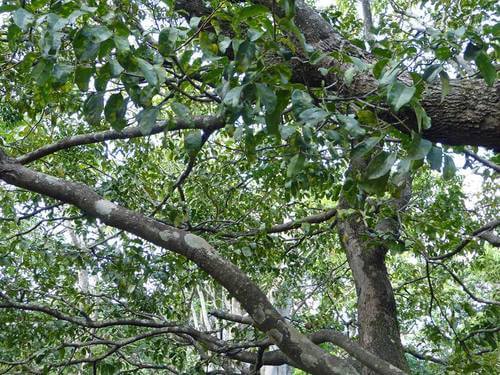Introduction
Diospyros ebenum, commonly known as Ceylon ebony or Ebony tree, is a tropical hardwood tree species belonging to the Ebenaceae family. It is widely valued for its dense, dark wood, which has been historically used for fine furniture, musical instruments, and sculptures. The tree is native to South and Southeast Asia, particularly found in India, Sri Lanka, and Indonesia.
Taxonomy and Botanical Classification
- Kingdom: Plantae
- Phylum: Angiosperms
- Class: Eudicots
- Order: Ericales
- Family: Ebenaceae
- Genus: Diospyros
- Species: Diospyros ebenum
Morphology and Identification
Diospyros ebenum is a medium to large deciduous tree, reaching heights of 20-30 meters (65-100 feet) with a straight trunk and a dense, rounded canopy. Its key morphological features include:
Leaves
- Simple, alternately arranged
- Elliptical to oblong in shape, 6-15 cm long
- Dark green, glossy upper surface and paler underside
Flowers
- Small, bell-shaped, and creamy white in color
- Dioecious (male and female flowers occur on separate trees)
- Fragrant and insect-pollinated
Fruits
- Round, berry-like fruits with a diameter of 2-4 cm
- Initially green, turning yellow or orange when ripe
- Contains 1-4 seeds, enclosed within a fibrous pulp
Bark and Wood
- The outer bark is grayish-black and rough
- The inner heartwood is jet black, dense, and hard, making it one of the most valuable timber woods globally
Distribution and Habitat
Diospyros ebenum thrives in moist tropical and subtropical forests. It is predominantly found in:
- Sri Lanka, where it is native and highly protected
- Southern India, in states like Tamil Nadu and Kerala
- Southeast Asia, including Thailand, Myanmar, and Indonesia
This species prefers well-drained, fertile soils and is often found in lowland forests up to 800 meters above sea level.
Uses and Economic Importance
1. Timber and Woodcraft
Diospyros ebenum is best known for its ebony wood, which is:
- Extremely hard, heavy, and durable
- Resistant to termites and fungal decay
- Used in crafting musical instruments (pianos, violins, guitars), luxury furniture, sculptures, and ornamental carvings
2. Cultural and Historical Significance
- Used in ancient times for making royal furniture and temple carvings
- Favored by Egyptians, Greeks, and Romans for decorative arts
- Traditionally used in Sri Lanka for crafting Buddhist statues and religious artifacts
3. Medicinal Properties
- Some parts of the tree have been used in Ayurvedic medicine for treating skin diseases, ulcers, and wounds
- The bark and fruit extracts possess antioxidant and antimicrobial properties
4. Environmental Benefits
- Helps in carbon sequestration due to its slow-growing, long-lived nature
- Provides habitat for birds and insects in tropical forests
Conservation Status
Diospyros ebenum faces threats due to illegal logging, habitat destruction, and overexploitation. It is classified as Vulnerable (VU) by the IUCN Red List due to:
- High demand for ebony wood leading to unsustainable harvesting
- Slow growth rate, making natural regeneration difficult
- Habitat loss due to deforestation and land conversion
Conservation Efforts
- Legal Protection: Sri Lanka and India have imposed strict laws restricting the felling of Diospyros ebenum
- Sustainable Forestry Practices: Promoting plantation-grown ebony alternatives
- Awareness Campaigns: Educating woodworkers and consumers on the impact of illegal ebony trade
Diospyros ebenum, the true ebony tree, holds immense ecological, economic, and cultural value. However, due to its slow growth and high commercial demand, conservation efforts are crucial to ensure its survival. Sustainable harvesting, afforestation, and legal protections must be reinforced to safeguard this precious natural resource for future generations.
